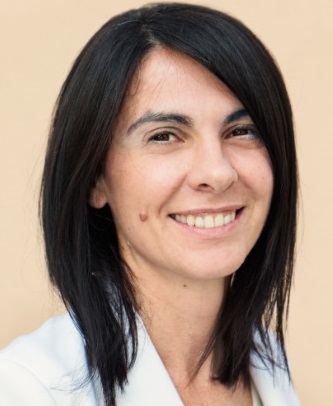
Short biography of Sabrina Sacconi PU PH
Professor of Neurology and works at the University Hospital of Nice as Head of the Peripheral Nervous System and Muscle Department, Head of the Rare Neuromuscular Diseases Reference Centre and the Competence Centre for Neurogenetic Diseases. She is also a researcher at IRCAN (Institut of Research on Cancer and Aging of Nice, INSERM U1081 – CNRS UMR 7284) directed by Professor Eric GILSON. Very active in research, both in the clinical and fundamental aspects, she obtained a PhD in Science from UNSA in 2008 and an Habilitation to Lead Research in 2012. His main research interests are Facio-Scapulo-Humeral Muscular Dystrophy and degenerative muscle diseases, with a particular focus on the impact of ageing and genomic instability on the pathophysiology of these rare diseases, as well as on the possible impact on innovative therapies. She is also interested in the use of new technologies to improve the diagnosis and clinical evaluation of neuromuscular diseases.
Interview of Sabrina Sacconi:
- What research, innovations or major advances in knowledge are you currently focusing on?
Thanks to advances in new technologies, innovative immunological and gene therapies in the field of neuromuscular and neurodegenerative diseases are making major advances and are beginning to be tested and used on patients.
Faced with these new opportunities, many clinical and biological questions arise as to how to develop new therapies that are more effective or less toxic, how to identify and select patients who could benefit from them, how to quantify the biological effects in the short and long term, and what strategy to adopt in more advanced disease stages.
These therapies could also be applicable to the aging of muscles and brains and furthering knowledge about normal aging and pathological aging in these two tissues could lead to the development of more therapies for neuromuscular and neurodegenerative diseases and all diseases related to aging.
- You are currently working on many research projects, can you tell us a few words about them? Do you have any other plans for the future?
Using new digital technologies, in vitro and in vivo models of normal and pathological aging, we are developing and testing new therapeutic strategies (such as immunotherapies for patients with neuromuscular genetic diseases), new indicators for measuring the progression of a disease or the effectiveness of a therapeutic approach (FACE NMD project, RESOLVE France, SMA2T) applicable at a distance (ALCOTRA PROSOL European Project, PROSOLCARE telemedicine platform) or biomarkers of severity or therapeutic monitoring in the field of neuromuscular diseases (FSHD CYTO) and ageing. For the future, I would like to continue and expand these projects and promote collaborations with the teams investing in fundamental and translational research within OncoAge and with the clinical teams within the OPTIMAGE Consortium.
- Can the federation be a support to help you progress through the network it leads?
- Your willingness for this working group as a Work Package Leader?
